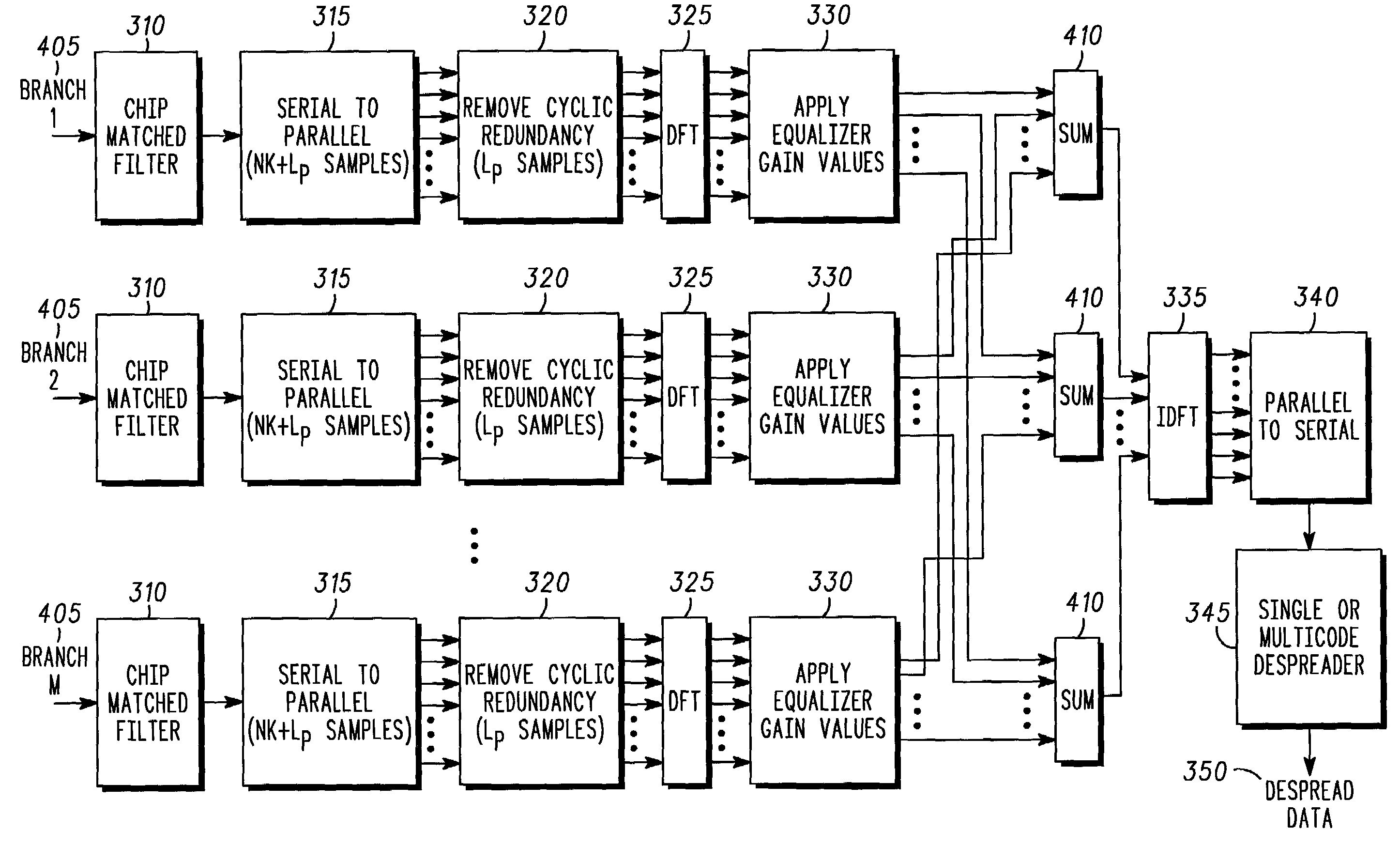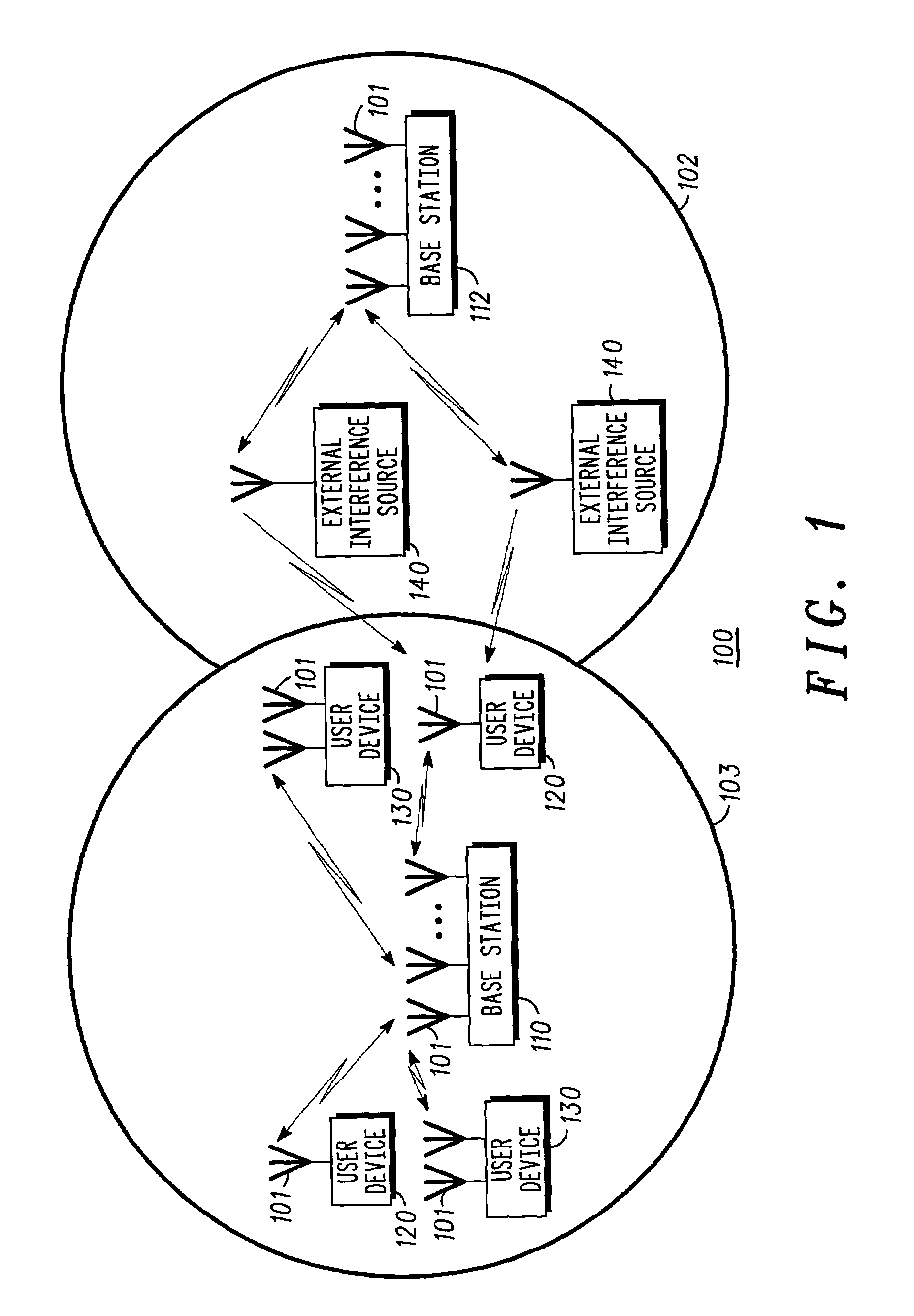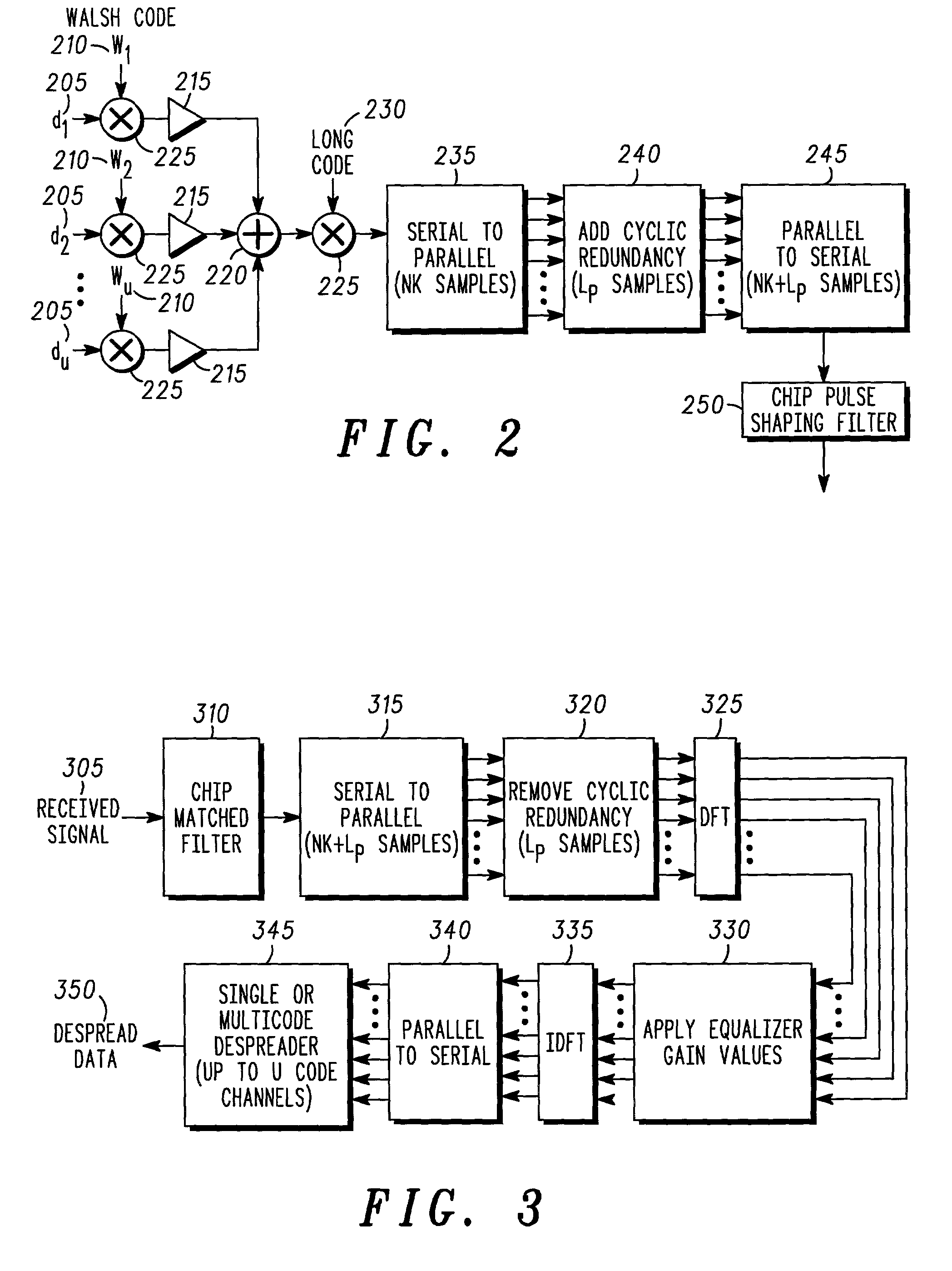Method and system for transmission and frequency domain equalization for wideband CDMA system
a transmission and frequency domain equalization and wideband technology, applied in the field of communication systems, can solve the problems of reducing the rake performance, increasing the peak per-user data rate, and increasing intracellular interferen
- Summary
- Abstract
- Description
- Claims
- Application Information
AI Technical Summary
Benefits of technology
Problems solved by technology
Method used
Image
Examples
embodiment 900
[0095]FIG. 9 is a flow diagram of an embodiment of a receiver detecting the transmitted data symbols on data block b 900. The embodiment 900 begins by being provided a frequency domain channel estimate on block b, a block sampling reference, and knowledge of spreading sequences 910. The frequency domain channel estimate, H[k], on a single subcarrier is an M×1 vector of channel gains between the transmitter and each of M receive elements at a particular subcarrier. The frequency domain channel estimate can be expressed as the DFT of the time-domain channel, h[m], where the time-domain channel is the chip-level sampling of the convolution of the pulse waveform with the true RF channel. In equation form this relationship can be expressed as:
[0096]H[k]=∑m=0NF-1h[m]ⅇ-j2πmk / NF
where NF is the DFT length or size (in one embodiment NF=NK). h[m] may include zero valued samples because the channel length is typically much less than NF. The received chip-spaced samples on block b, r[m,b] ...
embodiment 1000
[0110]A further embodiment 1000 may add cyclic redundancy to each individual spread sequence block to form U block sequences with cyclic redundancy 1080. The U block sequences with cyclic redundancy may be chip-level summed to form a multicode spread sequence block with cyclic redundancy 1090. Another embodiment 1000 may form a pulse-shaped signal on block b by applying a chip pulse shaping function to the multicode spread sequence block with cyclic redundancy 1095. The pulse-shaped signal may then be transmitted.
[0111]One embodiment of the invention has been described for the forward link of a direct-sequence spread spectrum system, but an embodiment of the invention can also be used for the reverse link, or uplink, of a direct-sequence spread spectrum or CDMA communication system. Further, an embodiment of the invention can be used in a point-to-point or point-to-multipoint direct-sequence spread spectrum communication link.
[0112]Additionally in an embodiment of the invention, Wal...
PUM
 Login to View More
Login to View More Abstract
Description
Claims
Application Information
 Login to View More
Login to View More - R&D
- Intellectual Property
- Life Sciences
- Materials
- Tech Scout
- Unparalleled Data Quality
- Higher Quality Content
- 60% Fewer Hallucinations
Browse by: Latest US Patents, China's latest patents, Technical Efficacy Thesaurus, Application Domain, Technology Topic, Popular Technical Reports.
© 2025 PatSnap. All rights reserved.Legal|Privacy policy|Modern Slavery Act Transparency Statement|Sitemap|About US| Contact US: help@patsnap.com



